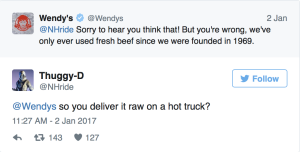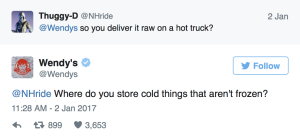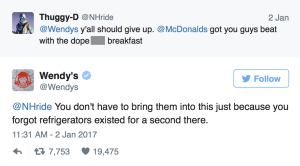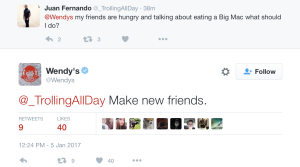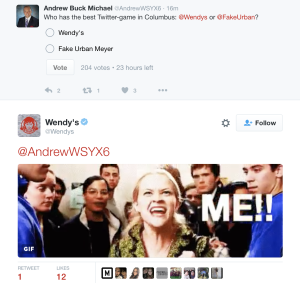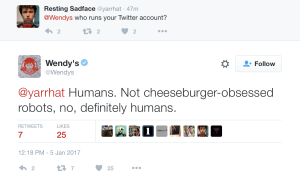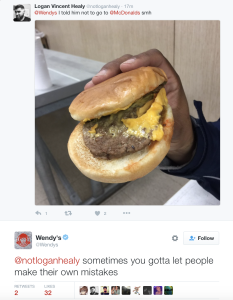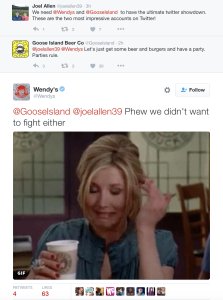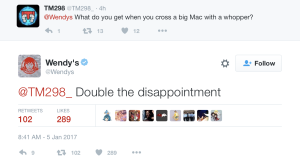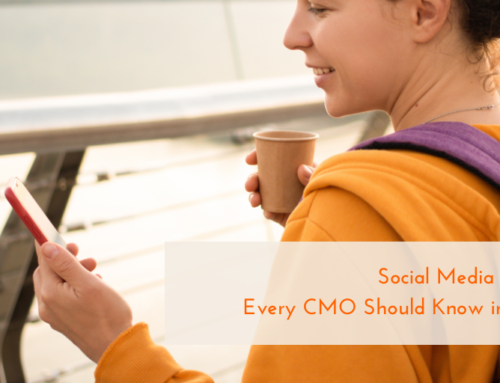If you pay attention to marketing news, then you’ve probably heard a few things about Wendy’s in the past few days. The fast food giant has used social media engagement to flame more than its burgers lately. The good-natured roast started when a Twitter user accused Wendy’s of lying about their never-frozen beef. What followed has become the stuff of legend.
A bit of an edge to social media engagement is nothing new for many brands. Take a look at Taco Bell’s Twitter history, and you’ll see where Wendy’s may have gotten their inspiration. Still, it’s unusual for good-guy Wendy’s to hit back—so unusual that the restaurant chain had to assure news outlets that they haven’t been hacked.
It’s important to note two important points here: First, Taco Bell has built its social media brand voice around snark; and second, the tweets from Wendy’s have gained so much attention that major news outlets are covering them. We’ll touch on these things in just a moment.
When Humor Works
Now, if you’ve built your brand around irreverent humor the way Taco Bell has, then you don’t have to think about when humor is okay. It’s your thing. It’s what you’re known for. If, however, you’re considering a break with your usual branding, choosing when to use humor requires some wisdom and, well…some tact.
If your plan is to change your brand voice on social media platforms, then you may need a gradual shift from serious to silly. Start with small tongue-in-cheek posts among your usual conversations and slowly increase the humor until you’ve reached Taco Bell status.
If you simply want to respond with humor—and perhaps a little bit of sarcasm—in the way of Wendy’s, then the way forward should be traveled with caution. Caution, however, must come with a hefty dose of commitment. You can’t throw your brand out there in a tweet and then reel it back in if you get uncomfy. If the splash you make is big enough, then you might just change the perception of your brand. Wholesome Wendy’s sure did.
How to Use Humor
It probably goes without saying that your humor in social media engagement should endeavor to be inoffensive, even when using sarcasm. This means avoiding stereotypes, generalizations, name-calling, insults, and profanity.
When you want to engage with reactionary humor, it’s best not to hit the enter button too soon. Take a few moments to discuss the inflammatory message and the response you’d like to give. You may need to reword your response a few times until you get it just right. Then test that response on an audience outside of your Twitter followers. What’s funny to you and your team might not resonate so well with others.
A Change in Brand Voice
The result of a successful flame on Twitter could be an entirely new brand voice, even if only for a few days. Wendy’s has seen a rise in social media engagement over the past two days, with hundreds of users begging for their own roast. What followed has been an exercise in hilarity and a totally new brand voice for the wholesome restaurant.
Keep in mind that simply changing your brand voice isn’t always the best idea. If you’re unsure, consult a branding specialist. Maybe that seems like a lot of work for one or two sarcastic tweets, but remember this: A few more fans today aren’t worth losing everything you’ve worked so hard to achieve. So far, Wendy’s has navigated the snarky waters well, but have they left any of their fans behind? Time will tell.




